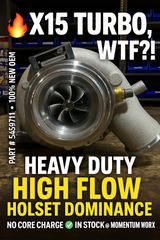The History of CAT 3406E Engines: A Milestone in Diesel Power
The CAT 3406E engine is one of the most iconic diesel engines ever produced by Caterpillar Inc., known for its power, reliability, and versatility. A favorite among truckers and heavy equipment operators, the 3406E helped define an era of commercial diesel engine performance. This article explores the history of the CAT 3406E, its development, specifications, and lasting legacy in the diesel industry.
Origins and Development
The CAT 3406 series dates back to the 1970s, when Caterpillar introduced the 3406A as a heavy-duty diesel engine for trucks and industrial applications. Over the years, the engine evolved through several iterations:
- 3406A (Introduced ~1973): A mechanical engine used primarily in heavy-duty trucks.
- 3406B (1980s): Improved mechanical version with enhanced fuel systems.
- 3406C (Early 1990s): Transition toward electronic control systems, with better cooling and airflow.
The 3406E, introduced in 1993, marked the most significant upgrade in the series. It was Caterpillar’s first fully electronically controlled heavy-duty diesel engine, ushering in a new era of computer-assisted performance and emissions control.
Key Features of the 3406E
The 3406E was available in various horsepower ratings, typically ranging from 375 to 550 horsepower, and could be configured for different torque outputs, making it suitable for a wide range of applications — from on-highway trucks to marine and industrial uses.
Some of the notable features include:
- Electronic Control Module (ECM): The ECM allowed precise control over fuel injection timing and quantity, improving fuel efficiency, emissions compliance, and engine diagnostics.
- Robust Design: With a cast-iron block and forged steel components, the 3406E was built to withstand extreme workloads.
- Ease of Service: The engine was designed with serviceability in mind, making it popular among fleet operators and independent mechanics.
Evolution and Emissions Regulations
While the 3406E was well-received for its performance and durability, the rise of increasingly stringent emissions regulations in the late 1990s and early 2000s pushed manufacturers to innovate further.
In 1999, Caterpillar introduced the C-15, which was essentially an updated version of the 3406E with refinements to meet tighter emissions standards. The C-15 retained much of the 3406E’s architecture but incorporated better fuel systems and cooling designs.
Eventually, the ACERT (Advanced Combustion Emissions Reduction Technology) versions of the C-15 took over in the mid-2000s, aiming to meet EPA 2004 and 2007 regulations. While ACERT engines had their critics, especially regarding complexity and maintenance, they represented Caterpillar’s commitment to cleaner diesel technology.
End of an Era
Caterpillar officially ceased production of on-highway engines in 2010, choosing to focus instead on off-highway, construction, and mining equipment. This marked the end of the road for the 3406E and its successors in the truck engine market. However, the legacy of the 3406E lives on.
Many of these engines are still in operation today, thanks to their durability and the vast aftermarket support available. Enthusiasts and owner-operators often prefer pre-2003 engines like the 3406E for their mechanical simplicity (relative to modern engines) and lack of complex emissions equipment.
Legacy and Reputation
The CAT 3406E has earned a reputation as one of the most reliable and rebuildable diesel engines ever made. It is often described as the "last of the best" before emissions controls dramatically changed engine design.
Truckers loved the engine for its strong pulling power, smooth performance, and ease of tuning. Diesel mechanics appreciated its modular construction and relative ease of overhauls. Today, the 3406E is highly sought after in the used market, especially among operators looking to repower older trucks or build custom rigs.
Conclusion
The CAT 3406E was more than just an engine — it was a turning point in Caterpillar's engineering legacy. It successfully bridged the gap between mechanical reliability and electronic precision, setting a standard that influenced the next generation of diesel engines. While it’s no longer in production, its impact is still felt across the diesel world, securing its place as one of the all-time greats in engine history.
Recent Posts
-
Inside the Cummins X15 EPA21 HE400 Turbocharger: What Changed and Why It Matters
Inside the Cummins X15 EPA21 HE400 Turbocharger: What Changed and Why It Matters While we at Momentu …4th Aug 2025 -
The History of CAT 3406E Engines: A Milestone in Diesel Power
The CAT 3406E engine is one of the most iconic diesel engines ever produced by Caterpillar Inc., kno …26th Jun 2025 -
1.32 A/R, 1.45 A/R, or 1.58 A/R - Which one do you have on YOUR Turbo?
The BorgWarner S400 and S410SX turbos are SUPER popular for CAT, Cummins, and Detroit trucks. While …11th Jul 2024


